Matchbox Monday dive back into the past IV

This is a big week for people who live in the USA. As many know, during June 1776, a Committee of Five, headed by Thomas Jefferson, set out to declare their independence from British rule. The thirteen colonies at the time, were looking at freeing themselves from Great Britain, and on July 2, 12 of them signed the "Lee Resolution" (New York abstained, although signed one week later), and 2 days later, the Declaration of Independence was unveiled, officially separating the 2 countries. Being British, and this being almost a quarter of a millennium later, I have no qualms over the USA festivities. That was a long, LONG time ago, and I love spending time in the USA, as we have become very close allies since. Daft fact, 2 of the people who signed the Declaration of Independence (John Adams and Thomas Jefferson), later became presidents. And both died on July 4th 1826. As we know, if you are in the USA on July 4th, you will be doing a lot of celebrating. Well, not the 2 presidents dying (RIP), but the whole Independence thing. So, I decided, why not do another of my dive backs this week. Only this time, every model is a USA vehicle.

To start with, I am digging back into the Lesney past. Now, officially, this would be 1969. This model, as well as 2 other Mercury castings, debuted in the 1969 basic range. The Cougar was Mercury's version of the Ford Mustang. It looked quite different to the Mustang, However, after its second generation, it switched to a larger floor plate, and was seen as closer to a Ford Thunderbird in size. A final 8th generation, before being retired in 2002, saw the model downsize to a similar size to the Ford Contour. Matchbox went with the 1st gen, and the initial run (thought to be a pre-production run that ended up being sent to South Africa) was in cream, and it immediately switched to metallic green for production. It switched to a Superfast wheel in 1970, which is where I come in. Early runs were still a similar shade of mid green that the regular wheel models sported.

The model sporting opening doors for added play value.

However, as Lesney were aiming to make models brighter as they transitioned to Superfast, this model was swiftly changed to a more yellowish hue to the green.

However, considering it only ran through 1970, and into early 1971, before a RatRod Dragster (altered casting with raised rear and large engine sticking out the front) replaced it, you can still find a shade or 2 to the yellowish green hue.

Jumping forward, in 2004, Mattel came up with a cool idea to release this iconic vehicle again. They created a new casting, which came with 2 looks. MB636 was a version of the model that came with a bulge added to the hood, and closed headlights on the front. They also created MB637, which did not have the bulge on the hood, but had open headlights, just like the original. The MB637 look debuted in the 2004 Superfast range in the came metallic green with red interior that the classes was sold in. It was even put in the same slot in the Superfast range, number 62.

It was one of 4 models that they had in the Superfast range, all in their old Lesney slots to celebrate the 35th Anniversary of Superfast. If you attended the Hershey Matchbox Convention that year (which I did), they created a special set of 4 dealer models, which were these same 4 models, but in new looks. The Mercury was in orange for this set.

However, there was a small mistake at the factory. You see, when they created the MB636 casting with hidden headlights, they created the base section and marked it down as MB636.They took this base bit, modified it to add a pair of headlights, but forgot to modify the base details. It still stated MB636. So, when they finished production in 2004, the parts were packaged back into storage the wrong way round. What would have been MB636 (bulge on hood, closed headlights) became no bulge on hood, closed headlights. The MB637 casting ended up being the body with the bulge but the base with the open headlights. Totally confusing. This is even more so when the 2005 Superfast release(s) came along. Burgundy for the ROW market, or white for the USA market, the team in El Segundo were expecting to use the MB637 casting for it. So, they added tampo printing for headlights. Which were tampo printed over a closed grille. Oh well!

Later in 2005, the tooling was sent from China to Thailand. Not knowing any different, the Thailand factory put the pieces where they were marked as being. To avoid more confusion, the team just decided to call this one MB636. So, it officially ended up being called what the error had put it as. So, when they did a 2006 "Streakers" Superfast release, they didn't bother with headlight detailing. It was a closed light. It also saw its first non-Superfast release, as it was added to the Shonen Jump Licensed 5-pack in brown.

So, now just known as MB636, the model was given one more premium outing in the Superfast series, which for 2006, was renamed Superfast America. The 2004 through 2006 series were all 75 models, but the release schedule was actually summer through spring. For 2007, they switched to a 20-model set, which ran from summer to the end of the regular year. In early 2007, the Superfast range had been dropped from most stores, becoming a Walmart exclusive, and the 2007 set was also only found in Walmarts. This model was in a lovely brown with a matte black roof.

For 2008, they finally decided to add the model to the basic range. Not once, but twice. At the time, the range was a set of 100 models, which for 2008 (through 2011) was only in the US market. LAAM and ROW markets saw a reduced assortment of 75 models in their ranges, with those that were above 75, renumbered to fill in gaps. However, this was MB3 worldwide, and as 25 models would see a version 2, this was chosen to see a blue release after the initial red. Both times, I did spot a shade.

For 2009, the model saw one more basic range outing. It was MB8 that year in a much darker blue. However, the ROW market did not get it. Only US and LAAM markets.

In 2010, they came up with a plan to replace the Superfast series with an even higher spec series. Lesney Edition. Models were upgraded to metal bases alongside their metal bodies. The Cougar was part of the first series of 20, and came in orange with a black roof.

But, was also in the "Real" all-exclusive 10-pack that year, and returned to the classic green look. This featured the standard chromed plastic base. After this, well, I don't know. The model seems to have disappeared. I don't know why. I think it should return. There was nothing wrong with it, and it was a cool casting. I would love to see it come back for more outings.

I am sticking with Lesney for dive back number 2. The MB53-C CJ6 Jeep. The CJ-6 was a longer version of the earlier CJ-5, designed more for civilian use when launched in 1955. Although it wasn't popular in the USA, it did see over 50,000 sales in other countries before being retired for good in 1981. The USA retired it after 1975, as the CJ-7 replaced it there. However, the Matchbox model didn't arrive until 1977. It came in red, and featured a tan roof. However, there was no window element in the model. Body, base, roof, interior. 4 pieces. It sold for 4 years like this.

And that meant variations. One of the major ones was actually the name. You see, when they launched it, they called it the CJ-6 Jeep.

They soon realized, that should be the other way round. So, in 1978, they simply placed a tab over the original name section, and re-marked the model as the Jeep CJ-6. However, some packaging never changed. All through its life, they kept putting it in picture boxes that had CJ-6 Jeep on it. Blister packs were updated.

This red body, tan roof ran from 1977 through 1980. So, of course that was going to mean it would never stay consistent. Apart from a very small run in early 1977 with the CJ-6 Jeep base, which were painted silver, the model always was left unpainted. The red paint would vary from a dark, almost pinkish red, to much lighter, almost orangey look.

The tan roof would also change. Some came out quite a dark tan, whereas others sported a much lighter, almost beige colour.

There is also a late run from the end of the red production life, where they were making plans to change it for 1981. Late models came with a black interior. These are also a fairly small run, and I don't believe there are any shade issues on a black interiored model.

Now, this is where it gets a little confusing again. 1981 was the year that Lesney decided to try and create more specific models for various markets. The year of the brand split. ROW markets received one set of 75 models, but the US market saw some of those replaced by others. However, the Jeep wasn't replaced. No, it was just in a unique colour. As I had mentioned, the real Jeep CJ-6 stopped being sold in the USA after 1975, but it was a Jeep. So, they thought they would give it one last attempt by making it yellow with stripes. It only ran for the one year, and after 1981 did see the model dropped there.

Now, I only have matte and gloss black bases on mine. There is a rare silver base variation I am still trying to find. The shade of yellow does vary slightly, but again, I am still looking.

For the ROW market, they simply changed the red body to a green body. It was supposed to have a yellow interior still, but with many US models being made with those black interiors, quite a lot popped up in green ones.

So many that you can actually find roof shades on a black interior green.

I am yet to find a green body shade on a black interior, but I am sure I can find one someday.However, more of them were found with yellow interiors.

Which I have found a small shade to the green. After 1981, the ROW market also dropped the model. However, if you lived in France, you might have spotted a selection of both red or green models with a Climat label on the hood. I have yet to see one.

After retirement, the model was dusted off in 1987, and sent to Hungary for a year. During that time, it was given many different colours, both in body, base, interior and roof. In fact, those wheels were sometimes substituted for non-Matchbox wheels as well. I never pursued any of those, as I only wanted the true Matchbox look.

After this Hungarian outing, the casting was retired for good.

The Jeep CJ-6 wasn't the only USA vehicle to get the details wrong in the first year. Matchbox were in on the ground floor with the Chevy Corvette C4. It was a bit manic. The model launched on 3rd January 1983. Yet, it was called a 1984 model year Corvette. 43 official 1983 Corvettes were made, purely as prototypes and test models. Only 1 exists now, and it is at the Corvette Museum in Bowling Green, Kentucky. But, Matchbox were not to know this when they made the model. I have this awesome preproduction sample from before the model entered production.

The Matchbox model was one of a few 1983 new castings available, as work had begun before Lesney went bust. It was copyrighted in 1983, at the beginning of the Universal era, and debuted as MB14 in the US market or MB69 in the ROW market. There were only a dozen new castings in 1983 (although 2 more appeared as promotionals at the end of the year, before debuting in 1984). Out of the 12 "new" castings, only 4 were actually new. The MB120 ford Sierra XR4i, this MB123 Chevy Corvette, MB124 Citroën 15CV and MB125 Mercedes-Benz Unimog. Six of the others were simply older castings that were "altered" into new ones, and 2 for the US range were just old models in a second MAN number. Only this one and the Sierra debuted worldwide. It was a lean year. Thinking this was a 1983 model, they actually put '83 Vette on the sides, as well as the base.

It was only sold for the 1 year, before they altered the model for 1984. Silver tended to vary in shade, and the upper and lower halves might also not match.

The majority tended to come with dot-dash wheels, but some were found with 8-dot wheels instead.

You might randomly find an amber window. 99.9% of them are clear.

There was that issue with dating the model. Until then, Matchbox had not really bothered putting years on models. Typical that their first attempt goes wrong. It would also go wrong with their next 2 (the 2 Dodge promos from the end of 1983, as they also had 1983 on their bases, but had to be changed to 1984). It was quite logical that we never saw them putting actual model years on bases for a while after this.

The model was swiftly changed for 1984. The first thing they did was delete the '84 off the base, and replace it with an '84.

The base of the model was still silver, now without tampo, but the body was now red. This might also partly be down to getting the upper and lower body shades to match. They had this issue earlier with a Ferrari 308GTB, and so did 2 different colours for the 2 parts to avoid the issue. They kept the 2 parts a different colour until they retired this casting in 1987, and updated it for 1988 with an MB204 Convertible. That stated '87 on it. I will go through that another day.

This particular look ran for the rest of this Targa Top's life in the basic range. 4 years! So, of course there will be variations. Shades of red are easy to find.

This time round, it was the 8-dot wheel which is the more common. However, dot-dash are pretty easy to find as well. There is a rare 3rd wheel. In 1986, a small batch was made with 5-arch wheels. Although a number of other models often saw gold instead of chrome on the wheel hubs, this one did not. It only came with chrome.

It did see a few other outings. In 1986, Superfast launched in the USA, and a white over red look with starburst wheels was in the SF-13 slot.

It was then added to the Laser Wheels series worldwide in 1987, as LW-13 in the same look. One of only a few that was not given a metallic finish on anything. I have had mine since new in 1987, so it is getting a few nicks on it. Still good enough, though.

This model was also one of the 6 guinea pigs for a Dinky set in 1987. Universal had bought the rights to the Dinky name previously, but due to taking so long to get their "Dinky Collection" out, they were in danger of losing the trademark. The law at the time dictated that they had to use it within a certain time. So, they grabbed 6 random models, gave them a flashy new look, threw them in red Dinky blisterpacks, and rushed them to a store in the UK, where they were officially sold within the timeframe, and invoice proving it. This store then just sold them on. I was extrrmely lucky that my parents had stopped nearby for a rest break on the way back from a vacation (or holiday, as we say in the UK), and while stopped, we popped in this store. Seeing these clearly Matchbox models in Dinky packages totally confused me. But, as a 15-year old, my parents were the source of me getting stuff, and I begged them to get me a set. If I had known how rare they would be, I would have talked them into getting a whole box full. Ha ha!

Also, at the end of 1987, Chef Boyardee in the USA ran a promotion. 3 models were included. This, a Kenworth Cabover, and my next dive back. It has been reported that this was also found with Laser Wheels. I have never seen one. After this, as mentioned, the casting was altered into a convertible for 1988, and this MB123 casting was never used again.

With this being a USA dive back, I thought, what is more iconic than a yellow school bus. Can you believe it was 1985 that Universal first launched an American School Bus in the range? The first of 4, so far, they have made. MB157 was simply called School Bus, but this was clearly an International S-series "Schoolmaster", which was made in real life between 1979 and 1989. It debuted as a US exclusive MB47 in 1985.

The model was late in the year to arrive in the US range, and in early 1986, it saw a modification. For some reason, they decided that the lower window in the rear door was not good to have a hole in it, where the window piece would extend. I guess it was awkward to produce. So, in early 1986, the casting was altered to fill in this hole, and just paint it black to give the illusion of a window.

In 1987, production of the model was moved from Macau to China. This coincided with the decision to release the model worldwide. The ROW market now saw the model, and it was also in the MB47 slot.

In late 1988, this was the Chef Boyardee promotional model. Chef Boyardee were doing models 1 at a time. The first was the Kenworth in late 1985, followed by the Corvette in late 1987, with the School Bus finally arriving in late 1988.

Also appearing in 1988 was the promotional issue in army green. It was to advertise Charlie Mack's Convention in Connecticut.

In 1990, the My First Matchbox series released the School Bus. At first, it was in a multipack, and featured red hubs on the green wheels. It was then moved to a single pack, but the hubs were changed to blue.

In 1991, we saw this blue model appear in a USA only Action Pack. These Action Packs featured a single model, and contained a few accessories that were compatible with the playsets they had at the time. The series did not take off, and was cancelled after the 1 year.

In 1991, they released another promotional. However, this was just on a standard US blistercard. The School District 2 on the side had been replaced by St Paul Public Schools.I believe this is for the Minnesota school system, although I may be wrong.

For 1992, the model was added to a Christmas giftset, only available through Sam's Club, part of the Walmart Group. There were 30 models in this set, and half of them were found to be in different colours to how they would normally be in the basic range. Because, yes, debuting in 1985, this School District 2 look ran until 1995! Yes, 11 years in one look! But, do you see something? Where are the red dots in the tampo?

But, before I get to that, I haven't quite finished 1992. The later runs of My First Matchbox saw the wheels no longer sporting any detailing on the hubs. The series finished after 1992.

And we also saw 3 more promotional issues. Hofstra University, Penn State University and Harvey World Travel, all in the USA, were releasing promotional items on this bus.

And, then the fun began. For 1993, the Chinese factory decided they would no longer add the red into the tampo print.

This was at the front and rear. I believe this happened in one go, as I have never heard of one with red one end, but not the other.

For 1994, the model was added to the Collectors Choice series, which was run through White Rose. Tyco had not long taken over the brand, and had closed the UK office, transferring Matchbox to the Mt Laurel officer in New Jersey. The tampo design was a nod to the new home of Matchbox.

After 1994, the model was dropped from the ROW range. In 1995, it was still going strong in the US market. The Chinese factory decided to have more fun. They dropped front and rear tampo printing completely. They also decided to stop chroming the front grille. There is a crossover. I am yet to find the rarer issue where the tampo front and rear was gone, but the front grille was still chrome.

Again, the removal of all front and rear tampo occurred simultaneously. I have not heard of any being found with one blank but not the other. As I said, it is the chrome grille with no front and rear print which is on my list to find. The rear does have 4 looks over those 12 years. Full tampo, lower window in door (US only), full tampo, black in door, black only tampo, no tampo (US only).

In 1996, after 11 long years, the unthinkable happened. The US MB47 looked a little different. What was this? Carpenter High School? That's new!

In 1997, it changed again! What the...? It was now in an Oaklyn Middle School livery. Go Team Go! This was also a 75 Challenge year in the USA, and so we also found 25,000 of them in plain gold.

It was also added into a City Streets 5-pack, which was sold worldwide.

For 1998, with Mattel taking over, the range was given a complete makeover. As part of the revamp, the model was now back in the worldwide range. But, only for the 1 year. It kept the previous tampo scheme, but the bus itself was now a much lighter yellow. In fact, the shade of light yellow did vary over the year. It was MB12 worldwide.

We also saw another promotion. This one was in China. They ran a special Fanta promotion, and 8 models were coloured orange, and had a Fanta design over the top. Many still sported other designs already, and the School Bus saw the same side design as the 1997 5-pack release.

In 1999, the model was back to being a US exclusive. It was number 1 in the range, and was actually a part of a competition that was run in 1998 in the USA. Children would enter, and the winner saw their town/city on the side of the first 5 models of 1999. The winner was from Ridge, NY.

A similar competition was run in 1999, and the winner this time came from Cleveland, Ohio. Again, 5 models were released, exclusive to the US range, that featured his home city. This was his school at the time. As this was 2000, the first 10,000 saw a Matchbox 2000 logo added at the rear.

2000 also saw the launch in the USA of the Pleasant Book series. Each thick card book had a short story in it, and each was about a certain Matchbox model. As you might have guessed, this book was simply called school. And the actual bus in the book, in this design, was added to the side of the book as an added bonus. There is another promotional model that was sold at this time. Exclusive to Hong Kong was a yellow model with Horlicks on it. I am yet to find one.

For 2001, the model was finally dropped from the US range. However, it was seen. A Nickelodeon licensed 5-pack saw the model in yellow with Hey Arnold on the sides.

However, the model did return to the US range in 2002 for one final outing. It was in red as MB15, and had a Police Transport design. This was also a logo year, but this model was an awkward one. The logo appeared on the side that was against the card in the blister. Matchbox faces left under Mattel ownership. So, this was a really hard one to gauge. You just had to take a chance.

It was also given this yellow with school design look as a puzzle set exclusive. In 2002, they released 4 different puzzle sets, each model came in a box that had a set of 20 road pieces, that you could slot together into many different configurations, as well mixing them between the 4 sets.

This was the last design for the model. But, before I move on to my last model, a few addendums. You might notice here, the 2002 basic range has a silver metal base. They decided to change it in 2002 (although the puzzle still used the old one). You may notice the updated base details on one of them. It was updated during the main production. All 50 logo models have the older base, but some non-logo models do as well. For those who were trying to get logos, they were using the base code as a guide. However, what I am yet to find is a 2004 seasonal issue, where the 2002 model was thrown in the Christmas sets, but had reverted to the old plastic base. Conversely, the 2000 Pleasant Book model continued into 2002, and this was converted to a metal base. Both are still on my hunt list. Finally, I have not made mention of the many, MANY ASAP/Color Comp promotionals done on this casting. It was made as a blank in 1998, and ran for a number of years, as it was popular. There are hundreds of short run Code 2 promos out there. Way too many for me to try and list.

The last model on my dive back today is a model I never felt really had the love from Matchbox. The MB303 Pontiac Firebird Ram Air. The Pontiac Firebird ran through 4 generations between 1967 and 2002. Matchbox never made a model of the first generation. However, the 2nd gen was given 2 different castings, plus an offshoot at the time, and has more recently been given another casting. The 3rd generation saw 3 different castings. Although all were based on the original, with a racing and police version being added later. The 2nd and 3rd generations of Firebird have been pretty well represented. However, when it came to the 4th generation, they only produced this one model. Although there is a Taco Bell cost reduced model as well for a 1998 promotion. That was not technically this model, and didn't even have a MAN number. So, I don't count it. I was extremely happy when this debuted in the 1997 range in yellow. MB20 for the US market, or MB66 for the ROW market. I couldn't wait to get more. Of course, if you live in the USA, you were privy to the Gold Challenge series, where 25,000 of each model was painted metallic gold.

At the end of the year, a premium issue was made for the Premiere Series. PC-14 saw this silver model with a higher level of tampo, and real riders.

Because I live in the UK, I only ever saw that debut yellow. The rest I have had to hunt down as a collector. You see, the model was immediately dropped from the ROW market. And we didn't get premiums. For 1998, this black model was a US exclusive MB72.

And, during production, the tooling was moved from the Thailand factory to the China factory. So, there is a variation.

There is not much between them. Black is black. Silver tampo is silver tampo. However, the tan interior is a little different between the 2 countries. Not a lot, but it is noticeable side by side. And then it was dropped from the US range. Seriously!

After that, the model was not quite finished. A 1999 Premiere Contemporary issue was sold in red. That was its fifth outing. And the Premiere stuff, as well as the Gold Challenge, were produced in shorter numbers anyway. As noted, the Gold Challenge was a 10,000 piece run, and the PC-14 issue was a 25,000 piece run. As of 1999, the premium items were now being distributed as Matchbox Collectibles, and did not have official production numbers on the packages, but I expect them to be fairly close to the Premiere range. So, only the yellow and black saw significant runs.

Talking of yellow, there was 1 more outing. A yellow model appeared in 2001, as part of the Coca-Cola licence they had. This was a premium issue in the 2001 Play Refreshed Collection. Again, I assume production levels were around the 25,000 mark, and after this release, the casting was never seen again. A grand total of 6 outings, of which only 2 were in significant numbers, and only 1 available worldwide. It was such a poor showing from this really cool little model. I always wished for more from it. I just don't know why it never got the love.

And, on that sad note, I am finished. I hope all the USA readers have a happy 4th of July. The rest of us will be carrying on with our lives as normal that day. I hope you enjoyed the latest dive back. Next week, I am back to showcasing newer items. I am preparing for my upcoming USA trip by developing a sweet tooth. Subtle hint! Until then, I hope everybody has a safe and happy week.


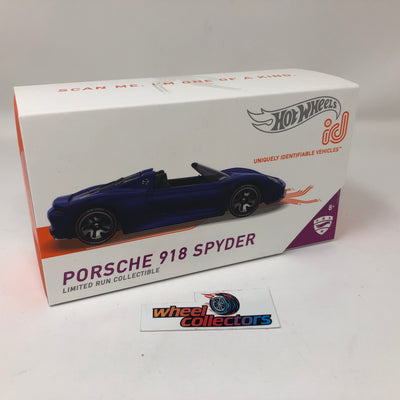
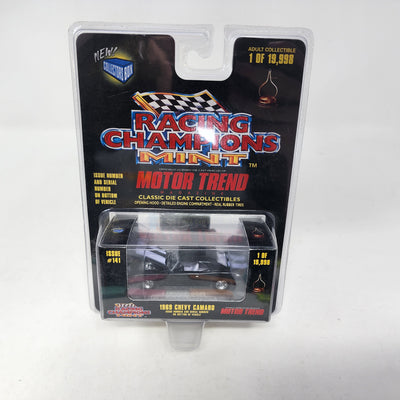
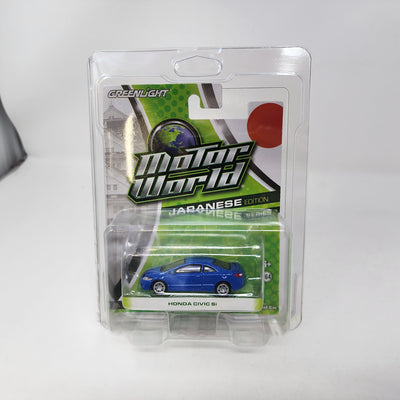
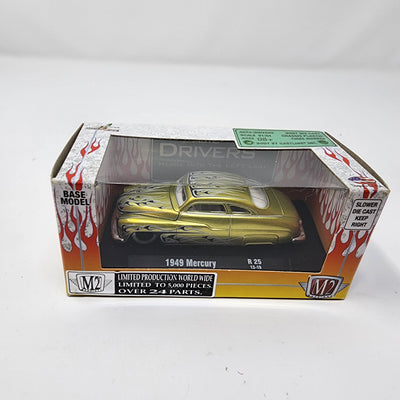
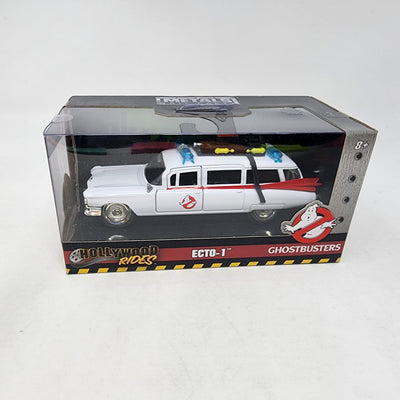
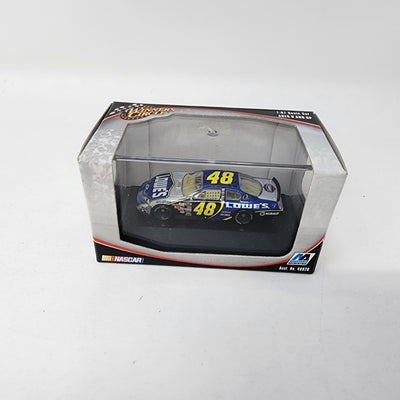
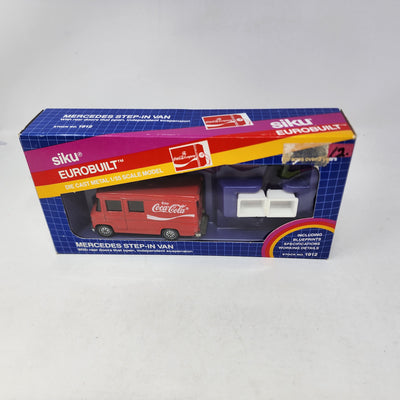
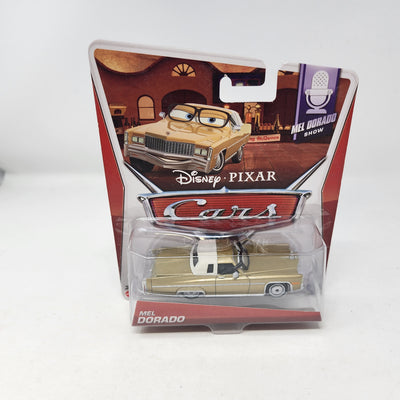
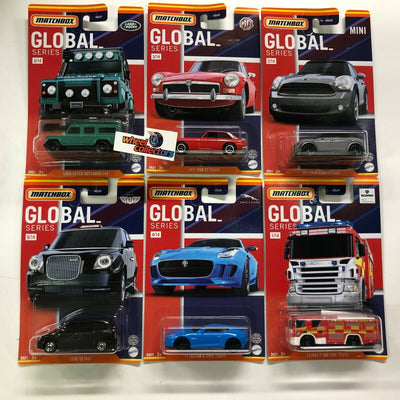


Share your feelings on the yellow Pontiac Firebird, got it together with the Corvette C5 and loved it from day 1.
I like pontiac firebird trams am coupe matchbox toys cars
With the Jeep, you missed the one that imitated a USA Postal Service Jeep. I would like to find that one. ( I know this is an open CJ5 and the real ones people saw every day were a closed DJ5 – but this was the only one MBox did.)
Leave a comment